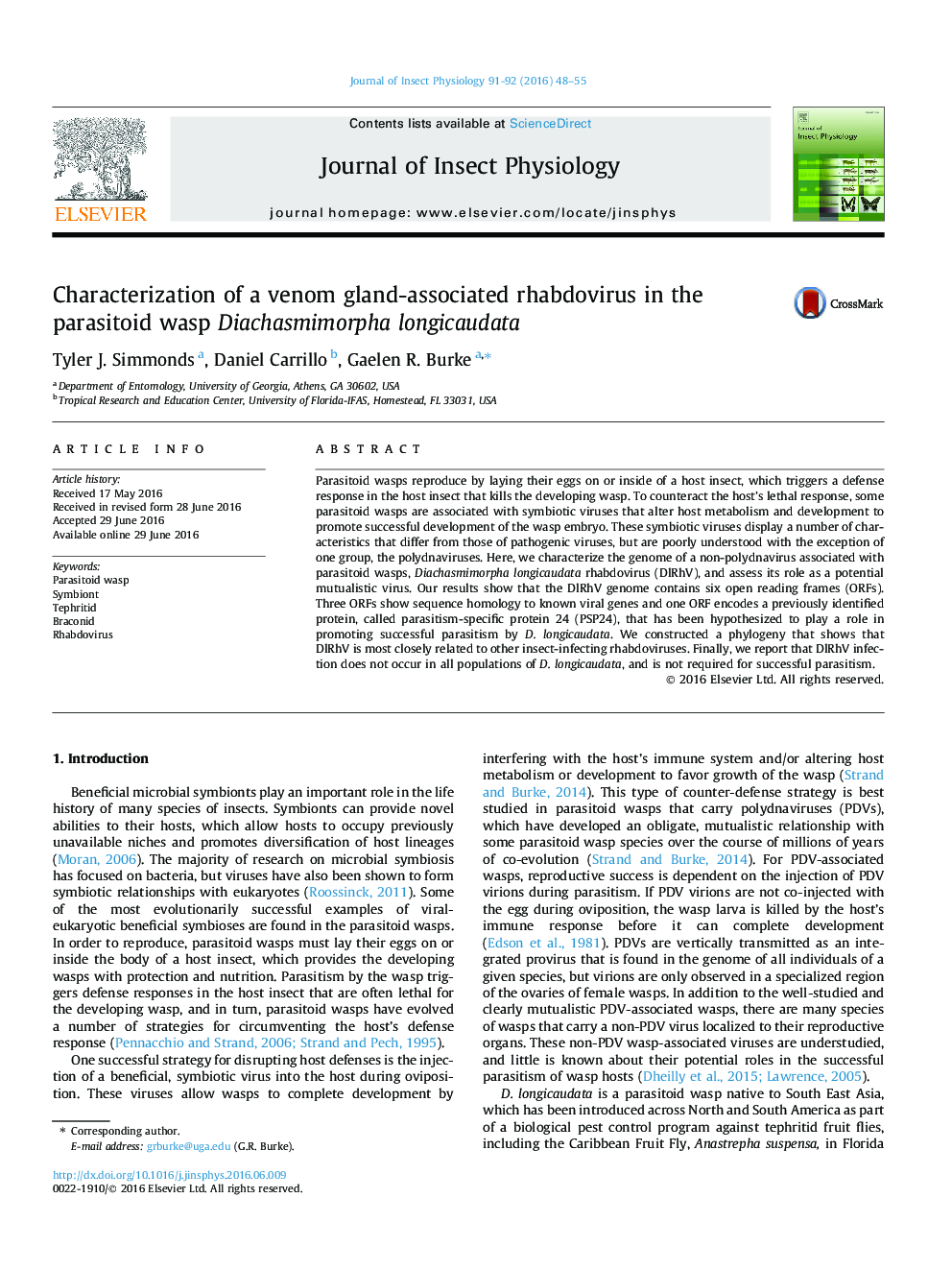| کد مقاله | کد نشریه | سال انتشار | مقاله انگلیسی | نسخه تمام متن |
|---|---|---|---|---|
| 2840270 | 1570979 | 2016 | 8 صفحه PDF | دانلود رایگان |

• D. Longicaudata rhabdovirus (DlRhV) is not present in all individuals and is therefore not obligate.
• DlRhV encodes a protein of potential importance for parasitism that previously had unclear origin in the parasitism system.
• DlRhV is closely related to other insect infecting rhabdoviruses.
Parasitoid wasps reproduce by laying their eggs on or inside of a host insect, which triggers a defense response in the host insect that kills the developing wasp. To counteract the host’s lethal response, some parasitoid wasps are associated with symbiotic viruses that alter host metabolism and development to promote successful development of the wasp embryo. These symbiotic viruses display a number of characteristics that differ from those of pathogenic viruses, but are poorly understood with the exception of one group, the polydnaviruses. Here, we characterize the genome of a non-polydnavirus associated with parasitoid wasps, Diachasmimorpha longicaudata rhabdovirus (DlRhV), and assess its role as a potential mutualistic virus. Our results show that the DlRhV genome contains six open reading frames (ORFs). Three ORFs show sequence homology to known viral genes and one ORF encodes a previously identified protein, called parasitism-specific protein 24 (PSP24), that has been hypothesized to play a role in promoting successful parasitism by D. longicaudata. We constructed a phylogeny that shows that DlRhV is most closely related to other insect-infecting rhabdoviruses. Finally, we report that DlRhV infection does not occur in all populations of D. longicaudata, and is not required for successful parasitism.
Figure optionsDownload as PowerPoint slide
Journal: Journal of Insect Physiology - Volumes 91–92, August–September 2016, Pages 48–55